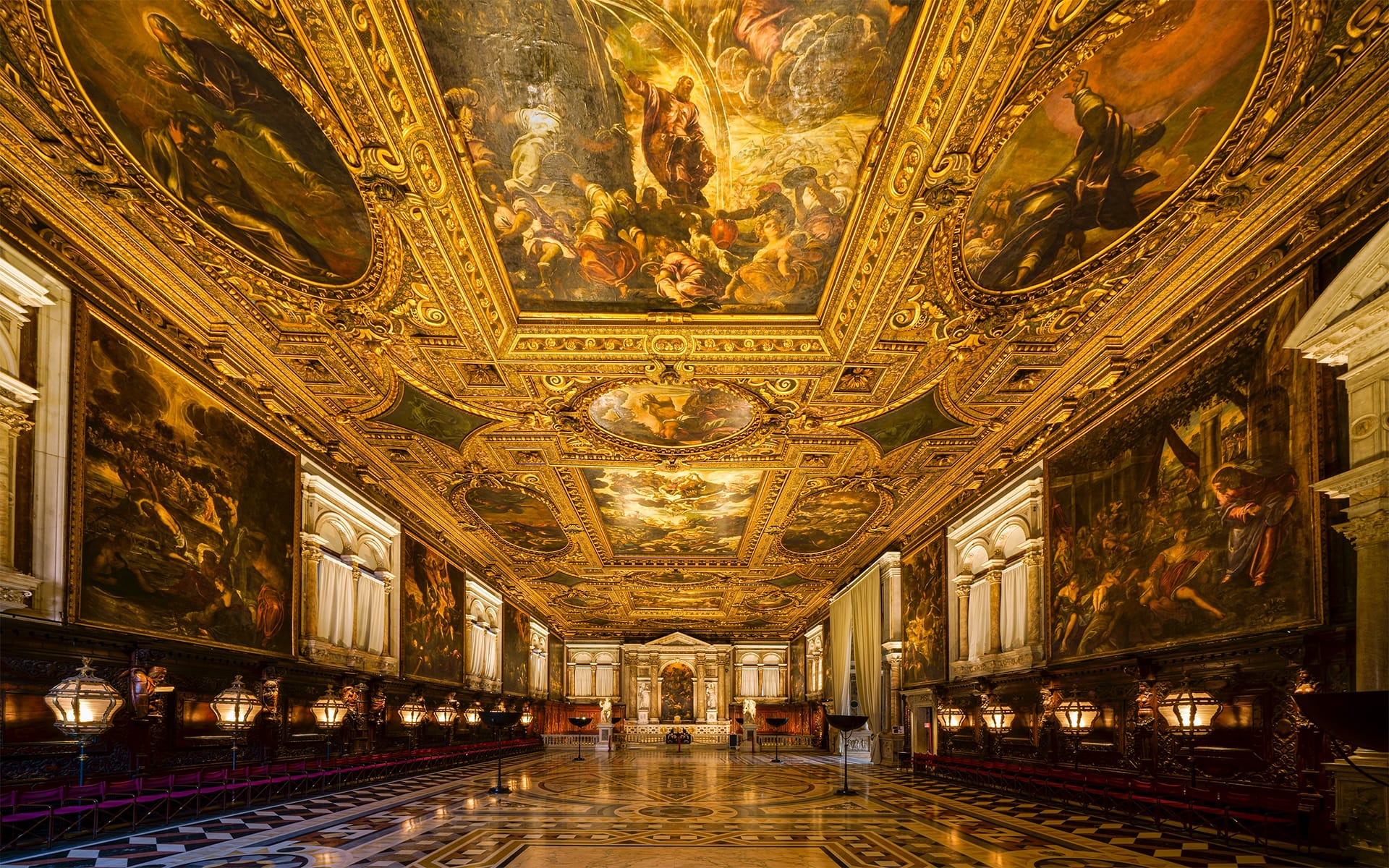5 Must-Visit Mediterranean Art Museums That Are off the Beaten Track
When on a cruise with Silversea, discover under-the-radar institutions in Rome, Lisbon, Venice, Catalonia, and Athens that any cultural connoisseur is sure to love

Nearly any list of the best art museums across Europe’s Mediterranean region includes such destinations as Barcelona’s Fundacío Joan Miró, Athens’s Acropolis Museum, and Rome’s Borghese Gallery. These and others, such as Venice’s Peggy Guggenheim Collection and Malta’s Museum of Fine Arts, are must-visit stops for any art lover traveling around the Mediterranean on a Silversea cruise. The staff at Silversea, with their unparalleled destination knowledge, can guide travelers to explore a host of fabulous museums that are off the beaten path.
“Our guests are typically well-traveled and have visited the most iconic cities in Europe’s Mediterranean many times,” says Barbara Muckermann, president and chief executive officer of Silversea Cruises. “We love to help them discover lesser-known and equally fascinating places for art and appreciation.”

Discovery is indeed the key appeal of art museums that haven’t quite been found, says Patricia Schultz, author of the iconic 1,000 Places to See Before You Die and, recently, Why We Travel: 100 Reasons to See the World. “Tucked away in the shadow of a world-class collection or clear across town, those unsung museums are gems hiding in plain sight that are so often overlooked,” says Schultz. “To stand in awe before a painting, a fresco, being lost in the moment and blissfully undistracted by the jostle of crowds and the drone of group guides, well, feeling like you have the entire collection to yourself happens rarely. When it does happen, it’s a very special memory.”
Below, find a list of five beloved yet under-the-radar Mediterranean art museums that Silversea guests can visit while traveling on one of the company’s extraordinary Mediterranean voyages.

1. The Palazzo Doria Pamphilj Gallery | Rome
In Rome, the Palazzo Doria Pamphilj Gallery is a small, slightly eccentric collection consisting of oil paintings, sculptures, and frescoes. It was curated by the illustrious Doria Pamphilj family, whose lineage dates to the 15th century. You’ll see works by Italian classic artists, including Caravaggio, Raphael, and Bernini, as well as by notable European artists; a favorite is Claude Lorrain’s Landscape With Dancing Figures and Titian’s Salome With the Head of John the Baptist. The palazzo itself, dating to the Rococo era, is a wonderful place to enjoy a calmer side of Rome.

2. Calouste Gulbenkian Museum | Lisbon
Lisbon’s Calouste Gulbenkian Museum is home to some 6,000 pieces of art, all amassed by Gulbenkian, a private collector. The museum, built in 1969 to house the collector’s art, is designed around themes of art: Egyptian, Greco-Roman, Mesopotamian, the Islamic Orient, Far East, and Western, and even René Lalique, John Singer Sargent, and the decorative arts.
Born in Turkey and of Armenian descent, Gulbenkian lived in Istanbul, London, and Paris before ultimately settling in Lisbon. Spend time in the gorgeous gardens that surround the museum or at the café, where the terrace overlooks the landscape.

3. Dalí Theatre-Museum | Figueres, Catalonia
Travelers who have visited Barcelona and walked in Antoni Gaudí’s well-trodden footsteps may want to head north to Figueres, about 90 minutes away and the birthplace of Salvador Dalí. The Dalí Theatre-Museum, designed around the native’s work, is best known for his Surrealist paintings and yet also showcases a much broader range of styles, including Impressionism, Pointillism, and Cubism. Notably, he’s also buried there. Besides creating Surrealist works, Dalí also designed jewelry. Don’t miss Dalí Theatre-Museum’s collection of his creations. “Love him or leave him,” Schultz says, “five minutes here will convince you that he possessed an imagination like no other.”

4. Scuola Grande di San Rocco | Venice
You’ll want to visit the Scuola Grande di San Rocco art museum in Venice more than once. It focuses on the works of Tintoretto, who trained under Titian, and one of the highlights is the interaction among more than 60 canvases that depict scenes from the Old and New Testaments. The adjacent St. Roch church, the last repository for this saint, features Tintoretto’s masterpiece St. Roch Healing the Plague-Stricken. Here’s a hint from Mary Forgione, a travel journalist formerly with the Los Angeles Times and a frequent visitor to the Mediterranean: “I loved this museum for two reasons. One is Tintoretto’s over-the-top ceilings and designs. Second, you can grab a mirror to study the details in the high ceilings and walls. I loved walking around with the mirror and being overwhelmed by the glory of it all.”

5. The Byzantine and Christian Museum | Athens
By all means, while in Athens make time to visit the Acropolis Museum and the Benaki Museum of Greek Culture, among the ancient city’s best-known collections. Still, the Byzantine and Christian Museum features a massive choice of Byzantine and post-Byzantine art and artifacts, dating from the third century to modern times. Many are religious artifacts of the early Christian, medieval, and Byzantine eras. The museum is housed in the villa of American-born Duchess de Plaisance, otherwise known as Sophie de Marbois-Lebrun, a French noblewoman. It was her country home, although Athens has grown and enveloped it so it’s now in town. Look at the altars and icons, ecclesiastical vestments, and Bibles. Additionally, an early Christian church has been re-created on the grounds.